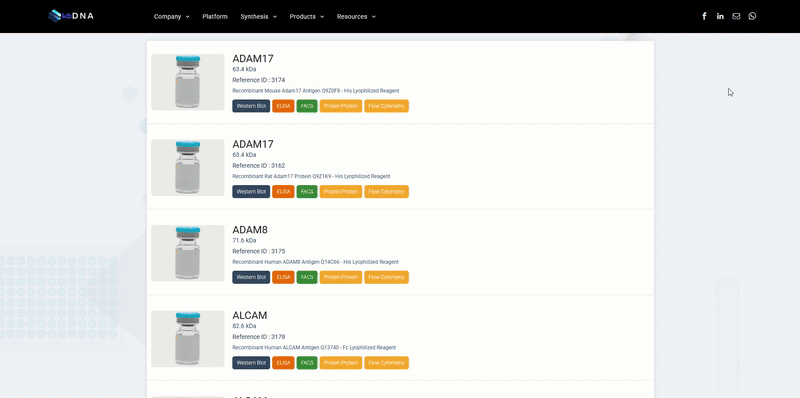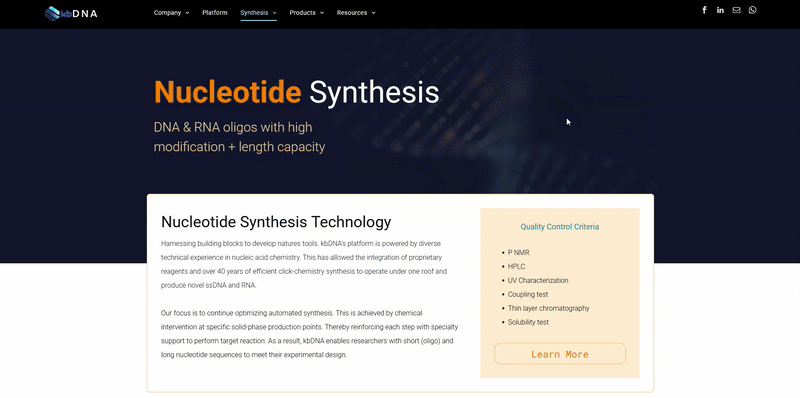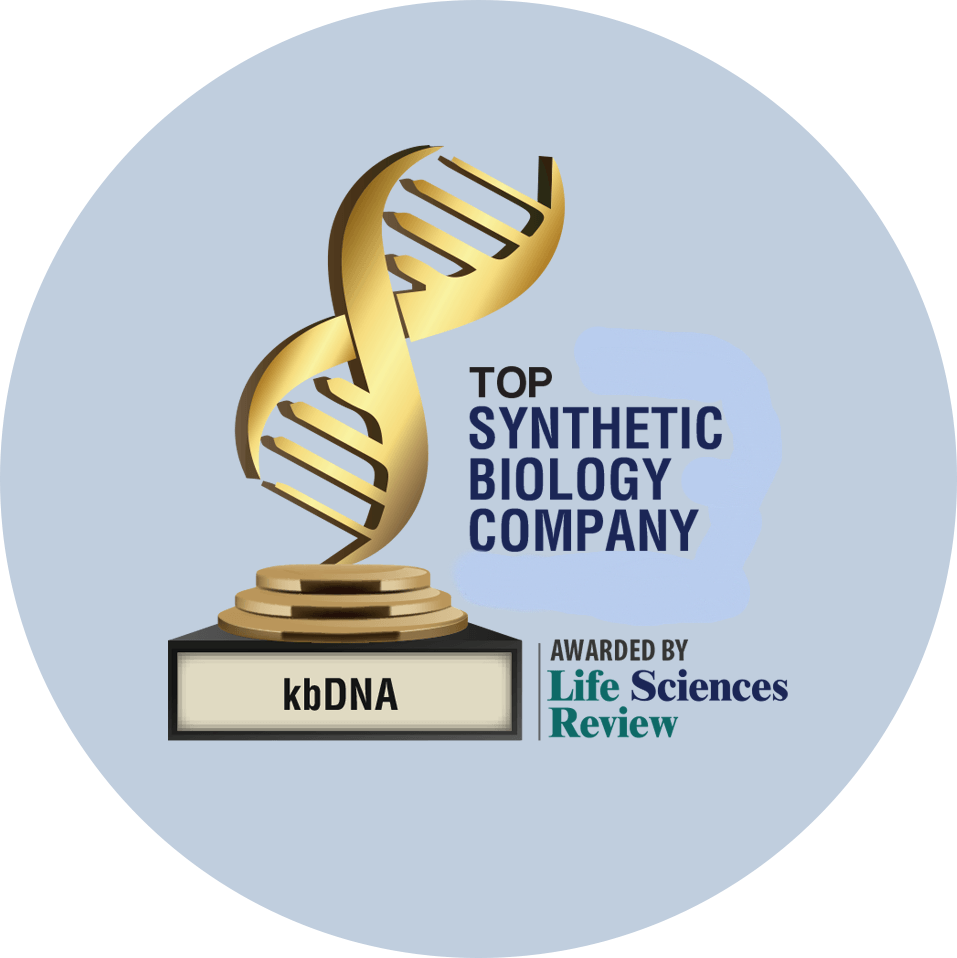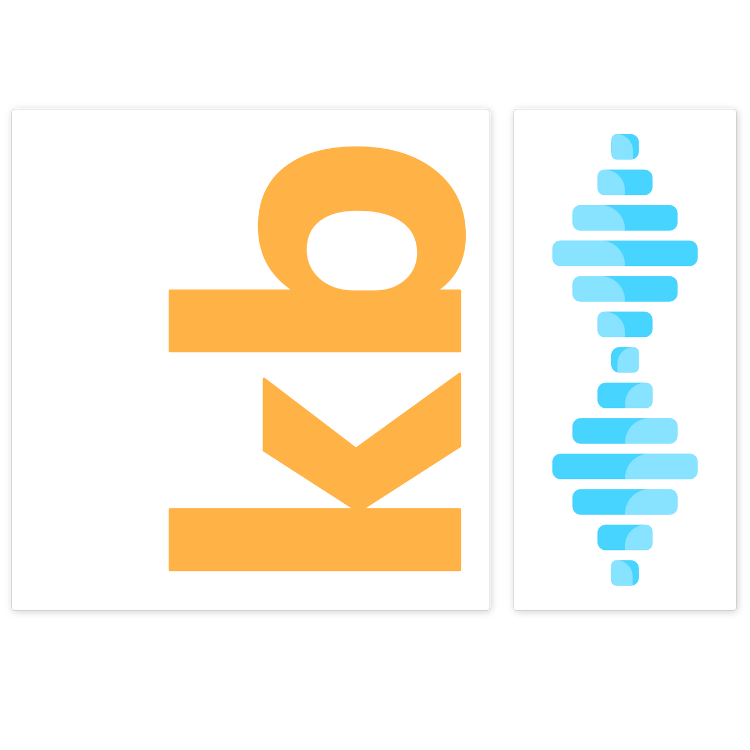CADM1
Recombinant ID:
3201
Request Datasheet
Gene of Interest
Gene Synonyms:
Protein Names:
Accession Data
Organism:
Homo sapiens (Human)
Mass (kDa):
48509
Length (aa):
442
Sequence:
MASVVLPSGSQCAAAAAAAAPPGLRLRLLLLLFSAAALIPTGDGQNLFTKDVTVIEGEVATISCQVNKSDDSVIQLLNPNRQTIYFRDFRPLKDSRFQLLNFSSSELKVSLTNVSISDEGRYFCQLYTDPPQESYTTITVLVPPRNLMIDIQKDTAVEGEEIEVNCTAMASKPATTIRWFKGNTELKGKSEVEEWSDMYTVTSQLMLKVHKEDDGVPVICQVEHPAVTGNLQTQRYLEVQYKPQVHIQMTYPLQGLTREGDALELTCEAIGKPQPVMVTWVRVDDEMPQHAVLSGPNLFINNLNKTDNGTYRCEASNIVGKAHSDYMLYVYDPPTTIPPPTTTTTTTTTTTTTILTIITDSRAGEEGSIRAVDHAVIGGVVAVVVFAMLCLLIILGRYFARHKGTYFTHEAKGADDAADADTAIINAEGGQNNSEEKKEYFI
Proteomics (Proteome ID):
Cell adhesion molecule 1 (Immunoglobulin superfamily member 4) (IgSF4) (Nectin-like protein 2) (NECL-2) (Spermatogenic immunoglobulin superfamily) (SgIgSF) (Synaptic cell adhesion molecule) (SynCAM) (Tumor suppressor in lung cancer 1) (TSLC-1)
Proteomics (Chromosome):
UP000005640
Mass Spectrometry:
N/A
Function [CC]:
Mediates homophilic cell-cell adhesion in a Ca(2+)-independent manner. Also mediates heterophilic cell-cell adhesion with CADM3 and NECTIN3 in a Ca(2+)-independent manner. Acts as a tumor suppressor in non-small-cell lung cancer (NSCLC) cells. Interaction with CRTAM promotes natural killer (NK) cell cytotoxicity and interferon-gamma (IFN-gamma) secretion by CD8+ cells in vitro as well as NK cell-mediated rejection of tumors expressing CADM3 in vivo. May contribute to the less invasive phenotypes of lepidic growth tumor cells. In mast cells, may mediate attachment to and promote communication with nerves. CADM1, together with MITF, is essential for development and survival of mast cells in vivo. Acts as a synaptic cell adhesion molecule and plays a role in the formation of dendritic spines and in synapse assembly (By similarity). May be involved in neuronal migration, axon growth, pathfinding, and fasciculation on the axons of differentiating neurons. May play diverse roles in the spermatogenesis including in the adhesion of spermatocytes and spermatids to Sertoli cells and for their normal differentiation into mature spermatozoa. {ECO:0000250, ECO:0000269|PubMed:11279526, ECO:0000269|PubMed:12050160, ECO:0000269|PubMed:12234973, ECO:0000269|PubMed:12920246, ECO:0000269|PubMed:15811952, ECO:0000269|PubMed:15905536, ECO:0000269|PubMed:22438059}.
Metal Binding:
N/A
Site:
N/A
Tissue Specificity:
N/A
Disease:
N/A
Mutagenesis:
MUTAGEN 406 406 Y->A: Nearly abolishes EPB41L3 binding. {ECO:0000269|PubMed:21131357}.; MUTAGEN 408 408 T->A: Strongly reduced affinity for EPB41L3. {ECO:0000269|PubMed:21131357}.
Reagent Data
Name:
Cell adhesion molecule 1 (Immunoglobulin superfamily member 4) (IgSF4) (Nectin-like protein 2) (NECL-2) (Spermatogenic immunoglobulin superfamily) (SgIgSF) (Synaptic cell adhesion molecule) (SynCAM) (Tumor suppressor in lung cancer 1) (TSLC-1)
Class:
Subcategory:
Recombinant
Molecular Weight:
Source:
Species:
Human
Amino Acid Sequence:
Tag:
Format:
Lyophilized
Formulation:
Sterile-filtered colorless solution
Formulation Concentration:
1mg/ml
Buffer Volume:
Standard
Buffer Solution:
PBS
pH:
7.4-7.5
Stabilizers
NaCl:
Null
Metal Chelating Agents
EDTA:
Null
Purity:
> 98%
Determined:
SDS-PAGE
Stained:
Inquire
Validated:
RP-HPLC
Sample Handling
Storage:
-20°C
Stability:
This bioreagent is stable at 4°C (short-term) and -70°C(long-term). After reconstitution, sample may be stored at 4°C for 2-7 days and below -18°C for future use.
Preparation:
Reconstitute in sterile distilled H2O to no less than 100ug/ml; dilute reconstituted stock further in other aqueous solutions if needed. Please review COA for lot-specific instructions. Final measurements should be determined by the end-user for optimal performance.












